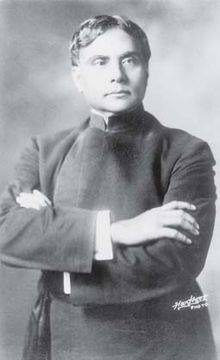Divinity : Spiritual Center -
Each of the spiritual centers of India has its own character and line of tradition. Among them all it is Tiruvannamalai (Arunachala) that represents the most direct, the most formless and the least ritualistic of paths, the path of Self-enquiry, whose gateway is silent initiation. This is expressed in the old Tamil saying: “To see Chidambaram, to be born at Tiruvarur, to die at Banaras or even to think of Arunachala is to be assured of Liberation.” “Even to think of” because in the case of the direct path physical contact is not necessary. Hence, it was no accident that the Maharshi made Tiruvannamalai and its sacred Arunachala Mountain his home.
The Maharshi called Arunachala the spiritual Heart of the world. Aruna, which means ‘red, bright like fire’, does not signify the mere fire that gives off heat. Rather, it means Jnanagni, the Fire of Wisdom, which is neither hot nor cold. Achala signifies hill. Thus, Arunachala means ‘Hill of Wisdom’.
Tiruvannamalai, situated at the foot of Arunachala, is a town of medium size, 120 miles southwest of Chennai, an ancient village with a large and splendid temple. Certain yearly festivals draw large crowds of pilgrims to Tiruvannamalai from all over South India. This is especially so during Karthigai (also known as Deepam), which usually falls in November. On this occasion a beacon light of clarified butter (ghee) is lit at nightfall on the summit of the mountain. At Sri Ramanasramam, the greatest festivals are the anniversaries of the birth and passing of the Maharshi (Jayanti and Aradhana), which fall respectively at the winter solstice and the spring equinox.
There is a Puranic story about the origin of the hill. Once Vishnu and Brahma fell to disputing which of them was the greater. Their quarrel brought chaos on earth, so the Devas approached Siva and besought him to settle the dispute. Siva thereupon manifested himself as a column of light from which a voice issued declaring that whoever could find its upper or lower end was the greater. Vishnu took the form of a boar and burrowed down into the earth to find the base, while Brahma took the form of a swan and soared upwards to seek its summit. Vishnu failed to reach the base of the column but “beginning to see within himself the Supreme Light which dwells in the hearts of all, he became lost in meditation, oblivious to the physical body and even unaware of himself, the one who sought”. Brahma saw the flower of an alse plant falling through the air and, thinking to win by deception, returned with it and declared he had plucked it from the summit.
Vishnu admitted his failure and turned to the Lord in praise and prayer: “You are Self-knowledge. You are OM. You are the beginning and the middle and the end of everything. You are everything and illuminate everything.” He was pronounced great while Brahma was exposed and confessed his fault.
In this legend, Vishnu represents the intellect and Brahma the ego, while Siva is Atma, the spirit.
The story continues that, because the lingam or column of light was too dazzling to behold, Siva manifested himself instead as the Arunachala hill, declaring: “As the moon derives its light from the sun, so other holy places shall derive their sanctity from Arunachala. This is the only place where I have taken this form for the benefit of those who wish to worship me and obtain illumination. Arunachala is OM itself. I will appear on the summit of this hill every year at Kartigai in the form of a peace-giving beacon.” This refers not only to the sanctity of Arunachala itself but also to the pre-eminence of the doctrine of Advaita and the path of Self-enquiry of which Arunachala is the center. One can understand this meaning in Sri Bhagavan’s saying, “In the end everyone must come to Arunachala.”
Sri Ramanasramam
Aruna Special Deepam





Comments
Post a Comment